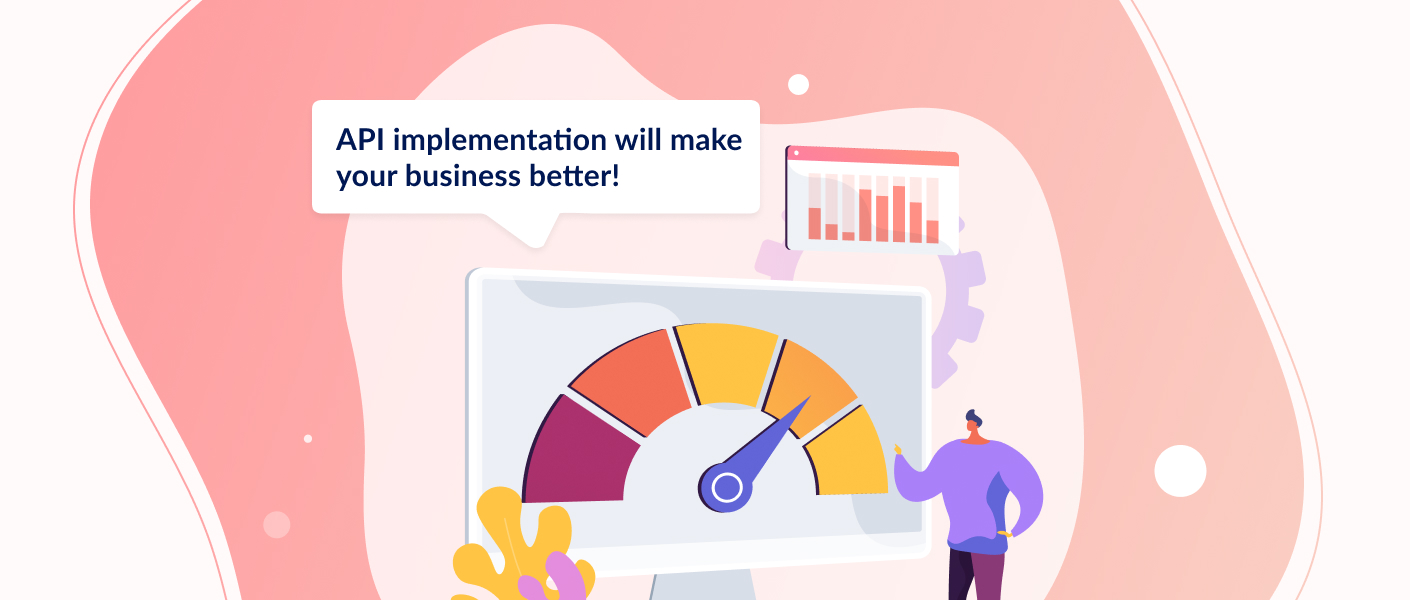Let's start with the basics: what is an API in programming? The acronym stands for Application Programming Interface. The name seems to speak for itself, but it is better to consider a more detailed explanation.
As already mentioned, an API is, first of all, an interface. An interface that allows developers to use ready-made blocks to build an application. When developing mobile applications for smart homes, a coder can use an API’s library with related nuances that are implemented and the coder only refers to this API in your code.
In the case of web applications, the API can send data in different formats (not only HTML), which makes it convenient to use when writing your own applications. Third-party public APIs most often serve data in one of two formats: XML or JSON. In case you decide to make an API for your application, remember that JSON is much more concise and easier to read than XML, and services that provide access to data in XML format are gradually phasing out the latter.
API in Web Applications by Examples

An application like Github has its own API that other developers can use. How they will use it depends on the capabilities that the API provides and how well the developers' imagination works. The GitHub API allows, for example, to get information about a user, avatar, repositories, and many other useful and interesting information.
If you take the Twitter API, for example, the interface of this service can give you information about a user's tweets, followers, readers, and so on. This is just a small part of the possibilities that anyone can implement using the API of a third-party service or create their own.
Such things as 2GIS maps, all kinds of mobile APIs, and desktop clients for Twitter and other social media are built based on the API. All their functions became possible precisely because the corresponding services have high-quality and well-documented APIs.
Why Does Your Application Need an API?
There are several situations in which you might want to create an API for mobile apps.
-
Mobile API app. Many mobile applications for various services work using the API of services mentioned above. A client with a smartphone receives the information via phone through the API. It is convenient and reasonable.
-
Open-source. Everything gets better with an open-source. In fact, if your application has a certain audience that uses it, why not wrap it up to your advantage? Well, for the benefit of the audience, of course, too. Create an API with the help of which your users, if they wish, can create new clients for your application, new services based on it, and, perhaps, reveal new facets of it.
-
When using frontend frameworks the developer can easily separate the API. This helps with mobile API security.
API Types Classification

Depending on the problem being solved, the API transfer protocols can be either standardized or of a unique format. Developers mostly use standardized protocols that allow them to use ready-made modules for their processing. This reduces the time for application development. Various specific types are used to achieve certain advantages, for example, reducing traffic, speed of command recognition, and in some cases, developing their own format.
According to the type of transmitted information, API is subdivided into the following formats:
API standard protocols:
-
Text
-
XML
-
JSON
-
CSV
Binary:
-
Streaming
-
Personnel
By the type of client-server interaction, the following types are most common:
Batch:
-
HTTP / HTTPS
-
Sockets
Protocol:
-
SOAP
Streaming
Broadcasting
API Systems Application
All online services and systems have public APIs. In some cases, you have to pay for a subscription to use API access. If your goal is to create an online service that will provide any information, then pay special attention to the API. Approach and good documentation of API capabilities are key to success. All third-party developers who will subsequently create additional applications are required to use this particular protocol.
It is a fairly common practice when the API server is the only data representation of the entire service, and the client part works only through the application. Vivid examples are Mobile-only apps like Viber and Instagram. In this regard, developers create a load balancing between API servers that helps to build a 24/7 service with scalable capacity. Before creating the server part, a coder should immediately assess the capabilities of this event and take them into account when developing applications.
Developers mainly work with the Linux environment and its services to achieve stability. This is because this operating system is more flexible, resource-intensive, and has a high level of logging and debugging in case of failures. Web servers or special services are used as a publisher. We have several multithreaded services developments to provide API systems.
How API Helps to Make Money?

There are plenty of benefits of APIs, but the one we really care for now is how it helps to make money.
The first option suggests providing services through the API. You can sell services or goods directly by contacting the API of your restaurant to form order for home delivery. Or provide a useful service on a paid basis, for example, the formation of accounting reports.
The second option aggregates several systems into one service. A great example here is an airline app. Now ticket sales services like Aviasales, OneTwoTrip, Momondo have become popular. They don’t represent one particular airline, rather take different APIs from airlines and publish their own service that collects data from these companies. The practice is very common and highly profitable.
The third option is "mixing data". If we return to the airline services again, then we can create an accompanying service based on them, for example, insurance. We publish a service or an alternative entry point for the API, where, in addition to flights, information on insurance concerning a specific flight will be added to the API data. Airlines or intermediaries, for example, do the same, expanding the API to inform about hotels.
Creation of API Technologies
We offer our services for creating API servers of all types and protocols described earlier. We have experience in building interaction in various high-load systems. At the output, we present not only a ready-made server but also a complete description of the protocol in the form of documentation. This protocol description can be provided to the following developers using this data, or in the public domain for OpenSource.
Final Thoughts

Why are APIs important? The server part of any mobile application guarantees the data exchange between individual users and any resources. Back-end programming is, in simple terms, the creation of this very server part. In the process, the following components are being developed:
-
Server architecture. Designing a server architecture is perhaps the most critical stage in creating an application. Here, methods of user authorization are started, algorithms for entering information are created, databases are drawn up, etc.
-
API for mobile application development. API is a system of requests to which the server will be able to respond correctly. It is the mobile app API that is responsible for the successful transfer of data from the server side to the application.
-
Administrative panel. If you urgently need to make changes to the application, then you cannot do without it. She is the main tool for instant application control. Its functionality will be developed depending on the goals and objectives of your project.
But if your company already has a website, then you will not need the administrative panel, because you just need to organize the exchange of data between the application and the website using the API for mobile apps and update the latter directly through the website!
FAQ
What Exactly Is an API?
API is an acronym for Application Programming Interface.
How Does API Work in Programming?
API is a software intermediary that enables two apps to communicate with each other.